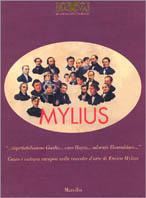Descrizione
This work describes art patronage in 16th-century Italy. For example, it was the time when Julius II and Bramante embarked upon rebuilding St Peter’s; Paul III commissioned Michelangelo to paint the “Last Judgement”; and Sixtus V and Domenico Fontana transformed the urban fabric of Rome. Other great projects included Borromeo and Pellegrino Tibaldi introducing the ideals of the Counter-Reformation in an ambitious programme of religious architecture in Milan; the centre of Venice being dramatically remodelled by the city’s government and Jacopo Sansovino; wealthy Venetian patricians building beautiful villas in the Veneto from designs by Pallado, and commissioning their altarpieces and portraits from artists of the calibre of Titian and Tintoretto. At the same time, Giulio Romano built and decorated the Palazzo del Te for Federigo Gonzaga and, perhaps in the most famous partnership of all, Vasari gave visual expression to Cosimo I’s ambition in an enormous programme of building and embellishment that established Florence as a centre of artistic excellence. The book is not only concerned with the famous: it also includes less well-known patrons – the guilds and confraternities that were such an important feature of urban life in the Renaissance, the women whose Christian piety lay behind the decoration of many chapels in Rome and Venice, the wealthy bankers and traders who prospered in every Italian city and the new religious orders who zealously promoted Church reform in their churches, altarpieces and fresco cycles. Her, Dr Hollingworth also examines how the patrons acquired their wealth, and how they spent it, why they invested in so much art and what factors governed their choice of themes and styles. She also discusses what process of design and construction and the complex relationships between artist, patrons, agents and advisers. Above all, she explores the impact of political and religious change on the development of 16th-century art and demonstrates the extent to which patrons controlled the final appearance of their projects.














